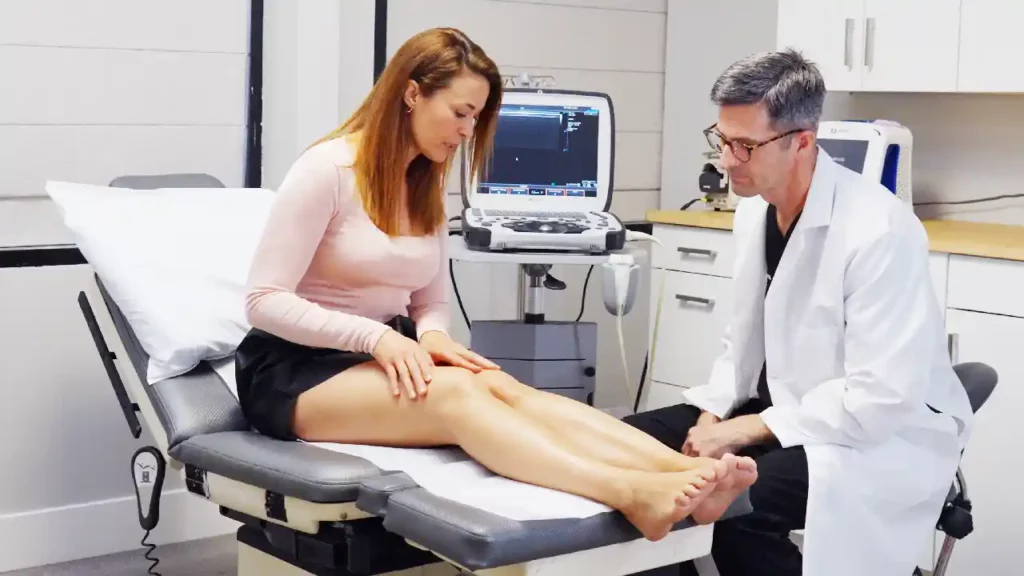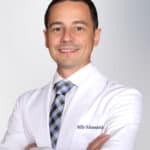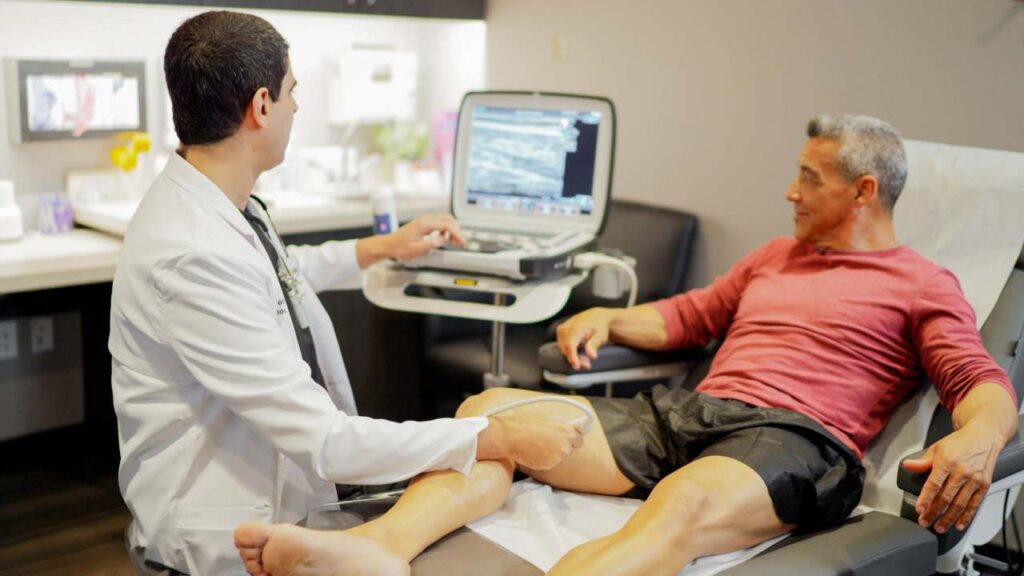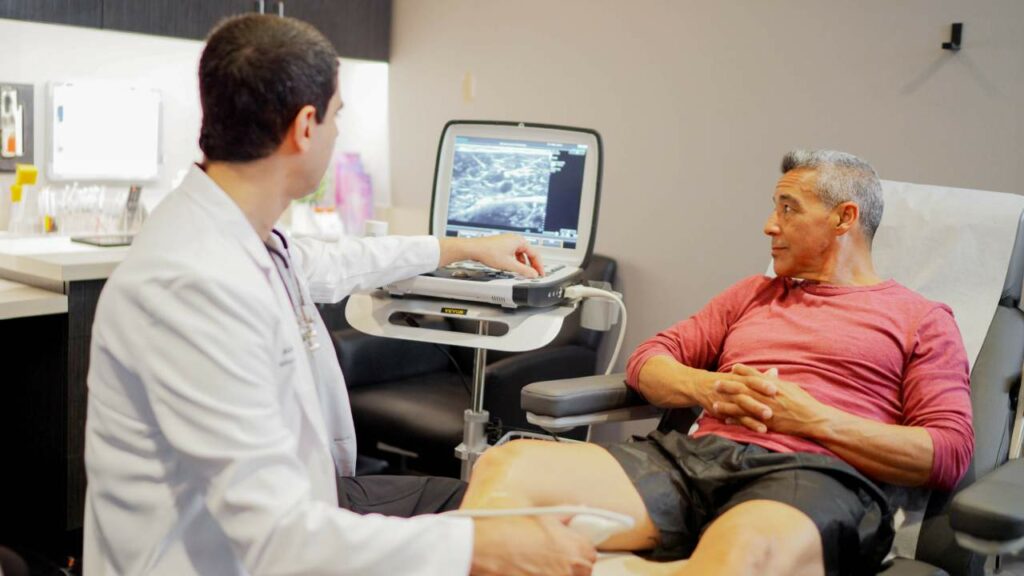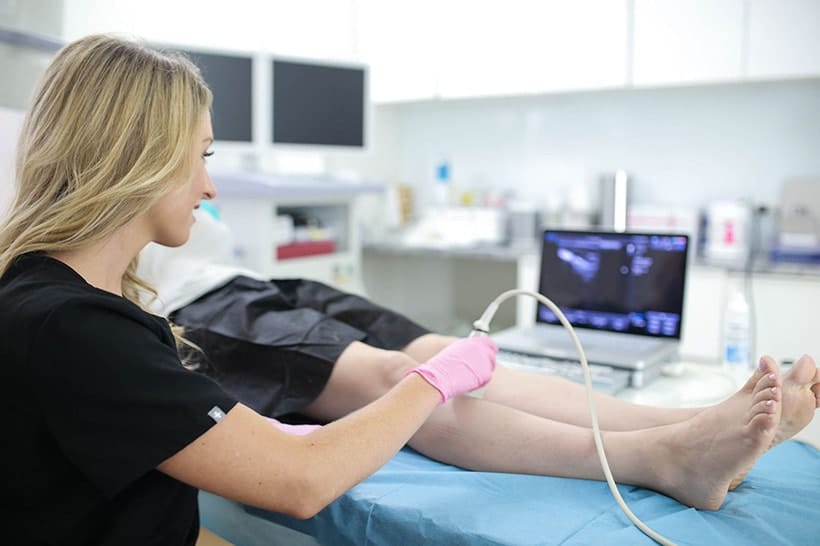Step 1: Booking an Appointment
Your varicose vein treatment near San Diego starts the moment you book an appointment with your chosen vein treatment center. If you’re in San Diego, you must consult the vein doctors at a reliable and accessible vein center within 30 minutes from your location. Vein Treatment Clinic is one of the most accessible medical centers for varicose vein treatment because it’s located in the beautiful La Jolla neighborhood on the outskirts of San Diego, close to the popular Westfield UTC shopping center. You can schedule an appointment online or call us at +1 858-461-7886. While booking an appointment, we encourage you to request free insurance verification — this will allow us to prepare an overview of your treatment costs with insurance coverage before your appointment.
Step 2: Initial Consultation
Vein Treatment Clinic is led by fellowship-trained vein doctors who believe in comprehensive care. Instead of simply treating spider veins and varicose veins, they conduct a thorough investigation of the root cause of your vein problems. In most cases, spider veins and varicose veins are symptomatic of chronic venous insufficiency, an underlying medical condition wherein the collapse of your vein valves makes blood accumulate in your leg veins. Most medical centers have a high rate of recurrence because they don’t address the root cause of your varicose veins. However, our fellowship-trained vein doctors always understand your concerns and diagnose vein disease.
Your initial consultation starts with a detailed discussion of your concerns. The vein doctors ask if you experience leg heaviness, frequent leg cramps, restless leg syndrome, leg pains, and leg swelling — there are common symptoms of venous insufficiency. There’s a strong chance that these symptoms are caused by underlying venous insufficiency if they worsen or intensify at the end of the day or after long periods of sitting or standing still. The vein doctors will also examine your leg veins, looking for other signs of vein disease. And they review your medical history and ask about your family history of vein problems.
Step 3: Vascular Imaging
The initial consultation is followed by vascular imaging tests. The vein doctors administer advanced vascular imaging tests, like Doppler Ultrasound, to project a visual representation of the blood flow in your leg veins on a computer screen. The vein doctors examine the direction of the blood flow to determine if you truly have chronic venous insufficiency. Vascular imaging conclusively reveals the root cause of your vein problems and supports your insurance claims, helping you optimize your insurance coverage and minimize your out-of-pocket financial burden.
Step 4: Treatment Planning
The vein doctor collaboratively curates a personalized varicose vein treatment plan with you. They curate the varicose vein treatment plan based on the diagnosis, your medical history, cosmetic concerns, and lifestyle. Our vein specialists discuss all your vein treatment options, including their advantages, disadvantages, risks, side effects, and costs. Because of your free insurance verification, we can also provide a complete breakdown of your vein treatment costs with and without insurance coverage. As such, you have all the information necessary to make an informed decision about your varicose vein treatment.
Step 5: Primary Treatment
The primary treatment is meant for patients with underlying chronic venous insufficiency. The best minimally invasive vein treatments for the underlying vein disease include radiofrequency ablation, endovenous laser ablation, and VenaSeal.
- Radiofrequency Ablation: The vein specialist makes a small incision on the skin’s surface to insert an ultrasound-guided catheter into the diseased vein. The catheter generates radiofrequency waves to heat up the diseased vein’s walls. The problematic vein collapses and gets absorbed by the body.
- Endovenous Laser Ablation: The vein specialist makes a small incision on the skin’s surface to insert an ultrasound-guided laser fiber into the affected deep vein. The laser fiber generates laser energy to irritate and destroy the diseased vein, restoring effective blood circulation to the heart.
- VenaSeal: The vein physician uses ultrasound guidance to inject a medical-grade adhesive into the diseased saphenous vein. The vein glue fuses the diseased vein’s walls, rerouting the accumulated blood into healthier veins. Over time, the diseased vein gets absorbed by the body.
Step 6: Cosmetic Treatment
The cosmetic treatment is meant for patients with superficial varicose veins and spider veins. These treatments only address cosmetic concerns and not the underlying vein disease. The best minimally invasive treatments include ambulatory phlebectomy and sclerotherapy.
- Ambulatory Phlebectomy: The vein specialist makes small incisions on the skin’s surface to physically extract and remove the bulging leg veins. The incisions gradually heal into scars that fade away.
- Sclerotherapy: The vein doctor injects a medicine called sclerosant into the spider veins to fuse their walls. The spider veins harden into scar tissues and gradually fade away in a few weeks. You may need 2 to 3 sclerotherapy sessions for optimal results.
Step 7: Recovery & Aftercare
The minimally invasive varicose vein treatment process concludes within 30 to 60 minutes with no downtime. Your vein doctor will provide a list of recovery guidelines, such as wearing compression stockings, avoiding lifting heavy objects, and engaging in cardiovascular exercises. However, you can resume all your usual work and activities as soon as you leave the vein clinic. Most patients seek varicose vein treatment during their work lunch break.
